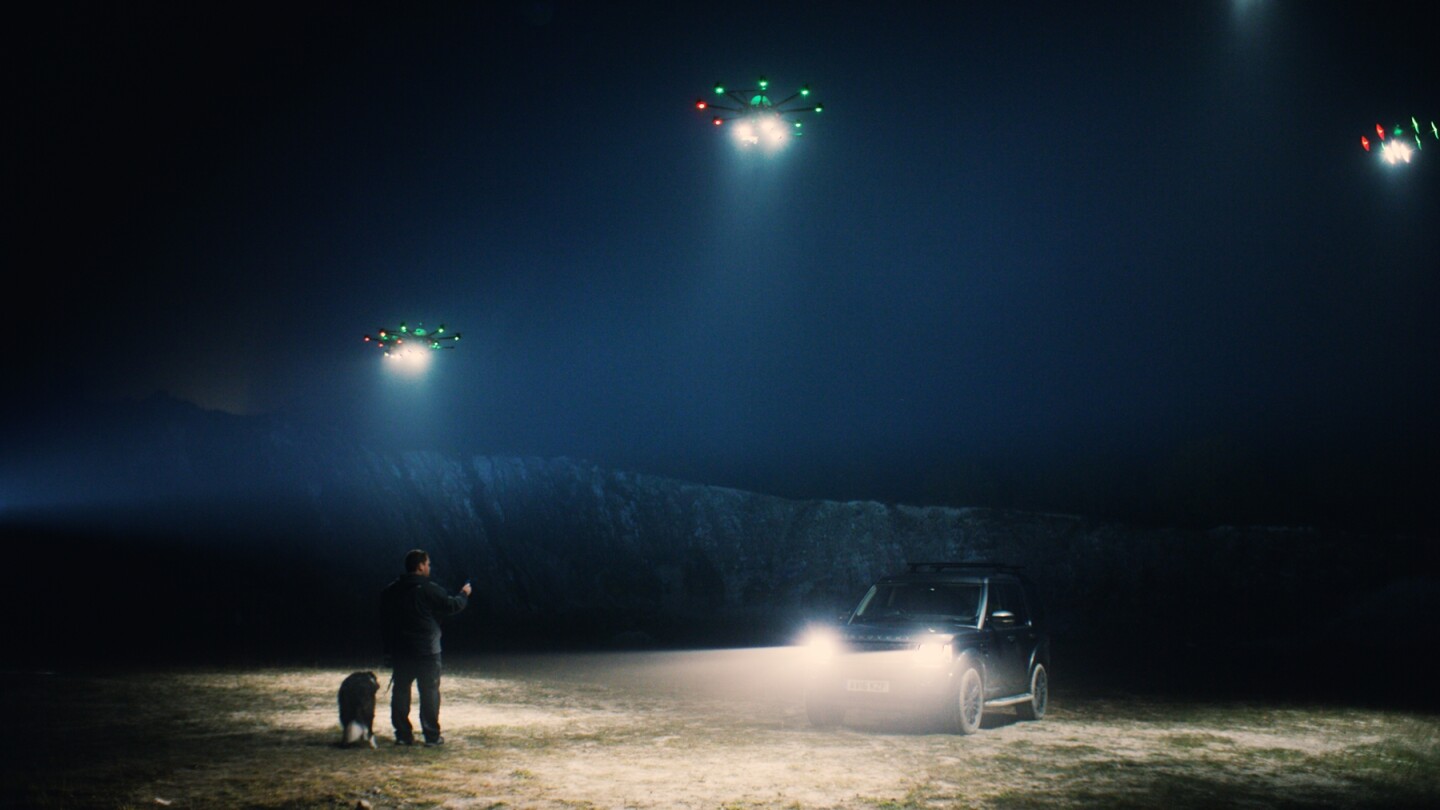It's easy to take streetlights for granted until there aren't any, and then the darkness can be unsettling or even dangerous. While streetlights are static and not always in places where they're needed, though, a new project proposes using drones to fly lighting above those who need it.
Fleetlights was dreamt up by UK insurer Direct Line, as a way to make people feel safer and to potentially save lives in unlit areas. The concept can be likened to an Uber for streetlighting, with users of the service able to send a request for lighting via a mobile app and have it flown out to their location.
Direct Line suggests any such service might find interested parties among individuals walking home from work in the dark and among search and rescue teams. As per the company's vision, a user would send a request from their smartphone, which would be relayed to a manned local Fleet Control center. Here, an operator would assign the requisite available drones to the request and dispatch them to the user's location.
The drones would fly fully autonomously, and on arrival would arrange themselves in a formation ahead of the user. A lead drone would communicate with the user's mobile device and with the secondary drones, meaning that as the user moved, they would continually reposition themselves, thereby lighting the user's path.

Once the user no longer needed the lighting, they could use the app to indicate as much and have the drones return to Fleet Control. The Fleet Control operator could also call the drones back if needs be, for instance if they needed charging.
At this juncture, two points should be made.
Firstly, Fleetlights is in reality a branding exercise that isn't planned for development as a commercial venture by Direct Line and, secondly, there would be huge hurdles to overcome in any attempt to develop the concept commercially. For starters, the issues of how the drones could be safely flown above roads, in residential areas and in close proximity to unwitting people would have to be addressed. Assuming those problems could be satisfied, the technology, logistics and roll-out would still have to be perfected.
These points, however, shouldn't detract from the fact that the concept in itself is both ambitious and exploratory, or from the fact that Direct Line has actually developed a beta version of the concept to quite a rigorous and innovative extent. What's more, the firm is making the technology it has developed open-source, so that developers can use and build upon it.

The firm has trialled Fleetlights in the UK town of Petworth, chosen because it is said to have one of the most dangerous – specifically, unlit – roads in the country. Trials were also carried out in the surrounding South Downs. Two types of drones were used, both fitted with high-powered on-board lights. They also feature carbon-fiber airframes with stainless steel and titanium fixings, as well as two lithium-polymer batteries for redundancy.
The S650 drone, of which there is an inaugural fleet of 20, is intended for tracking pedestrians. It has four motors that produce a top speed of 34 mph (55 km/h) and a single on-board light. The drone's range extends to 1.5 mi (2.4 km) or 20-30 minutes flight-time. The S900 drone, meanwhile, is intended for tracking vehicles, using six motors to travel at speeds of up to 60 mph (97 km/h) and is equipped with three on-board lights.
The units are fitted with the 200 W tungsten AL250 drone light, which was developed to deliver bright, focused light for photography, film and video production. What with being designed for use with drones, it is efficient, lightweight and small, drawing 30 W of power and offering a running time of 25 minutes at maximum power.

A variety of other cutting edge technologies were used in the trial. The control software had to be written in such a way as to have the drones fly along in front of the user so as to light the way, rather than to follow behind, as is usually the case with tracking drones. So-called "Rover" technology, meanwhile, allows the drones to be track the user's phone while remaining in formation.
With the project team initially unable to get suitable response speeds out of the drones, they created a mesh network, which improved communication times between the ground systems and the drones in the air, and allowed the drones to be controlled more accurately. Direct Line says mesh networking has only recently begun to be used with drones.
In addition, the GPS positioning used by the drones was only accurate to around 1-2 m (3-7 ft), so Real Time Kinematic satellite navigation chips were added that were able to increase positioning accuracy to 10-20 mm (0.4-0.8 in).
For all this innovation, Direct Line flags up a number of areas in which it views Fleetlights as needing future development were the project to be taken forward. For the trial, the flight paths of the drones were preprogrammed by licensed pilots to meet the regulations of the UK's Civil Aviation Authority, whereas the use of automated collision detection to make the drones aware of their surroundings would be needed to both make them logistically viable and safe. It also suggests that hydrogen-based power units could be used to increase the flight time of the drones.
The Fleetlights project was started in August with the trials being carried out more recently.
The video below shows the Fleetlights in action.
Source: Direct Line










